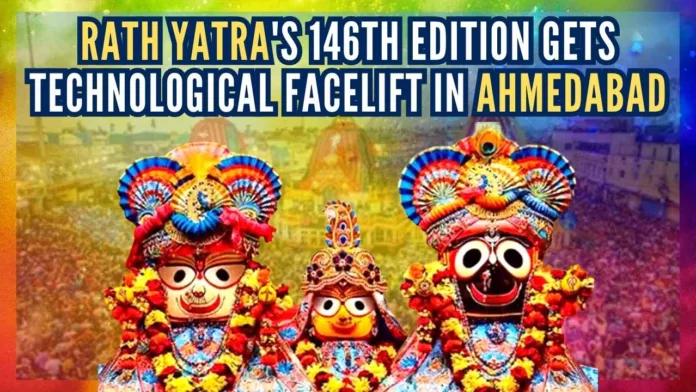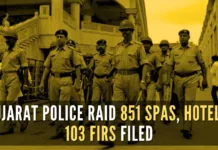
As part of the 146th Rath Yatra, Gujarat Police worked extensively with Anant University for tech support in Ahmedabad
For the first time, Gujarat Police have complete tech support as Ahmedabad readies itself for the 146th Rath Yatra. Gujarat Police has worked extensively with Anant University in Ahmedabad to get technical support in understanding the crowd, the ground reality, and managing it better.
The chariots of Lord Jagannath, his brother Balbhadra and sister Subhadra embark on the annual yatra from the 400-year-old Jagannath temple in the Jamalpur area in Ahmedabad.
IANS interviewed Bhaskar Bhatt, Director of the School of Design, Anant University to understand the project better. He actively participated in the project and showed the first demo of 3D mapped Rath Yatra route of 22 km.
The LiDAR-based mapping will be the base for all layers of safety. VR and AR capacities will also be augmented in the coming days.
Regarding the collaboration between the university and Gujarat Police, Bhatt said: “In March 2023, a memorandum of understanding (MoU) was signed between the university and Ahmedabad police. Gujarat state home minister Harsh Sanghavi himself signed this MoU. This is the first project under that MoU. Our forte lies in learning and experimenting with IR 4.0 technologies such as AI, AR, and Analytics and we want to help the police force.
“The project is divided into two phases: First is, information mapping that helps police understand the land. Instead of doing it manually, we helped them to do it all with tech support. We used 125 drones to cover this land spanning 22 km-this gives us a three-dimensional understanding of this ground.”
In total 11 students of Anant University plus three professors worked with Gujarat Police for 35 days to map the ground and build a holistic control room for D-day.
In the second part of the project, the team examined how it is to walk or drive on that path and what are the challenges that can be addressed. This was done using 360-degree cameras.
The route for the yatra procession is generally Jamalpur Chakla-Vaishya Sabha-Gollimda-Astodia Chakla-Madangopal ni haveli-Raipur Chakla-Khadia Juni Gate-Khadia crossroads-Panchkuva-Kalupur circle-Kalupur bridge-Saraspur.
The idea was to create a control system that has a precise idea of what’s going on the ground. Comprehensive decision-making about what’s going on the ground is of utmost importance.
“We used highly specialized equipment to allow a police officer to make better decisions on the day of Rath Yatra. We also designed special helmets to help cops on the ground. We will monitor everything on the final day. For example: when we monitor the speed of the Rath Yatra, we also identify when the density of the crowd is getting more than expected, we can then divert this crowd to reduce congestion,” he added.
This project was not undertaken considering the communally sensitive nature of Ahmedabad’s old city. The yatra moves from most Muslim-populated areas of the city.
“In the past two decades, there have hardly been any communal issues during Rath Yatra so this mapping is not for keeping communal harmony in check. This is for better bandobast. For example: if there are medical emergencies on the ground then how to manage it better through tech support,” he concluded.
[With Inputs from IANS]
PGurus is now on Telegram. Click here to join our channel and stay updated with all the latest news and views
For all the latest updates, download PGurus App.
- PM Modi launches another scathing attack on Congress; says ‘Rajiv Gandhi scrapped inheritance law to save family property’ - April 25, 2024
- TN: ED questions five district collectors in illegal sand mining case - April 25, 2024
- ECI issues show cause notice over alleged MCC violations by PM Modi, Rahul Gandhi; seeks response from BJP, Congress chief - April 25, 2024










